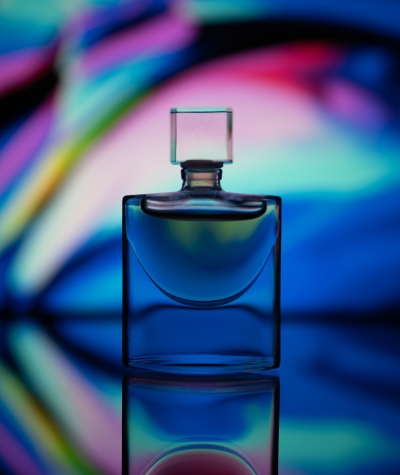in this page:
- Fragrances throughout history
- Creating perfumes
- The use of fragrances
- Fragrances on your skin
- New innovations
- Where can I find out more?
Fragrances throughout history
We have used fragrances throughout history to improve our quality of life - right back to Egyptian times. Humans have the ability to distinguish over 10,000 different odour molecules - even if we can't name them all! Today, we don't just buy fragrances in perfumes or 'fine fragrances', but choose a vast array of cosmetic and toiletry products based on their scent. Everybody likes fragrance - it can help to enhance your mood and is one of the most important triggers of memories. But how much do we really understand about how these fragrances are created?
Creating perfumes
The job of composing perfumes in the fragrance industry is carried out by an expert commonly known as the 'nose'. The nose is a true artist who receives in-depth training for many years to be capable of conveying moods with fragrance. They need to be able to distinguish between each of thousands of ingredients - alone or in combination - from which they could create a complete new fragrance from scratch.
The fragrances the nose creates will be based on eight themes - called 'accords'. These are floral, chypre, oriental (masculine and feminine), woody, aromatic and hesperide (masculine and feminine). All these accords are split into many different subfamilies.
Some ingredients are extracted directly from nature, such as from citrus peel or from the petals of flowers. Some ingredients are created synthetically - many of these drawing inspiration from nature. An example of this is musks, which once were only found in the gland of a particular deer that was being hunted to extinction. In a laboratory, scientists are able to identify the molecules that make the essence of a natural smell and replicate these exactly.
Perfumers are constantly seeking inspiration for new fragrances and take exploratory trips around the world to identify new sources. This might include a rare flower, or a freshly picked fruit or an exotic spice. They are able to capture the fragrance molecules in this remote location and return them to the lab. They are then selected and evaluated by a process of gas chromatography and mass spectrometry.
The use of fragrances
Fine fragrances are just one way of using the final product. Fragrances are also used in products we use every day such as washing powders, shampoos, deodorants and soap. Manufacturers have had to develop advanced technology to make sure that the fragrance is not lost within another complex substance or degraded in the product. This could include placing it in a capsule, such as starch or sugar, which is triggered to break down and emit the fragrance when it comes into contact with water in the washing or even perspiration process.
The potential to be allergic to any substance, such as an ingredient, is in-built and different for each of us. A small number of people may become allergic to certain widely-used fragrance ingredients. These will be indicated in the list of ingredients to allow consumers the opportunity to make an informed choice. This does not prevent the safe enjoyment of these fragrances by millions of consumers.
Fragrances on your skin
Fragrances smell differently depending on a person's 'body odour profile'. This is based on our genetic make-up and is what allows a blood hound to tell people apart or find them through smell. Dramatic changes in how a fragrance smells on a person are often a result of hormonal changes and ageing. However, what someone eats on a regular basis can affect the way a fragrance smells; if one is on a high-fat, spicy, diet, for example, fragrance will be more intense. Smoking and taking medication can also have an effect. How long a fragrance lasts can be affected by the type of skin - for instance, sometimes dry skin does not hold fragrances as long as oily skin.
New innovations
At the moment it is not possible to capture a fragrance and express its component parts numerically. However, scientists are working hard looking at what happens between the nose and the brain to create the trigger that provokes our sense of smell. When they have discovered the source of this interaction it will be possible to measure a fragrance and define it using a series of numbers.
This will unlock a world of possibilities in fragrance creation. It will become possible to 'send' a fragrance digitally and then to receive it via a nasal implant or virtual headset bio-sensor. We could envisage a time when films could have fragrance attached to them, bringing them alive in the cinema in a total sensory experience.
Where can I find out more?
For more information on the fragrance industry and how it is regulated, visit the Fragrance Foundation, the International Fragrance Association or the International Fragrance Association UK which issues specific guidelines to the manufacturers and users of fragrance ingredients.


